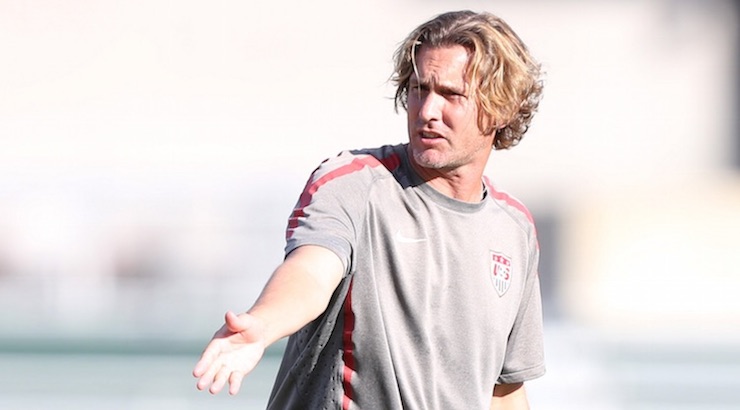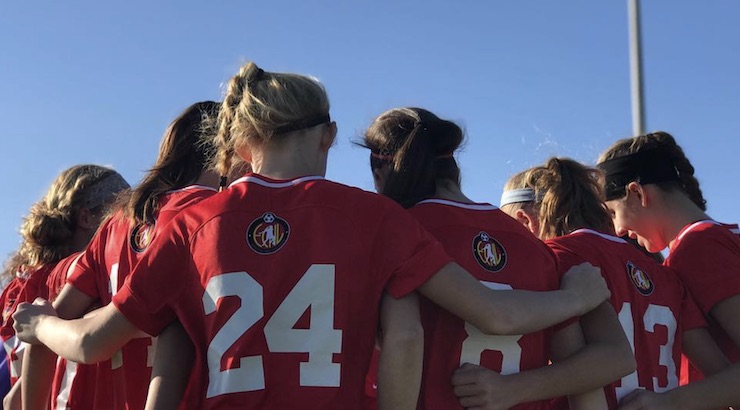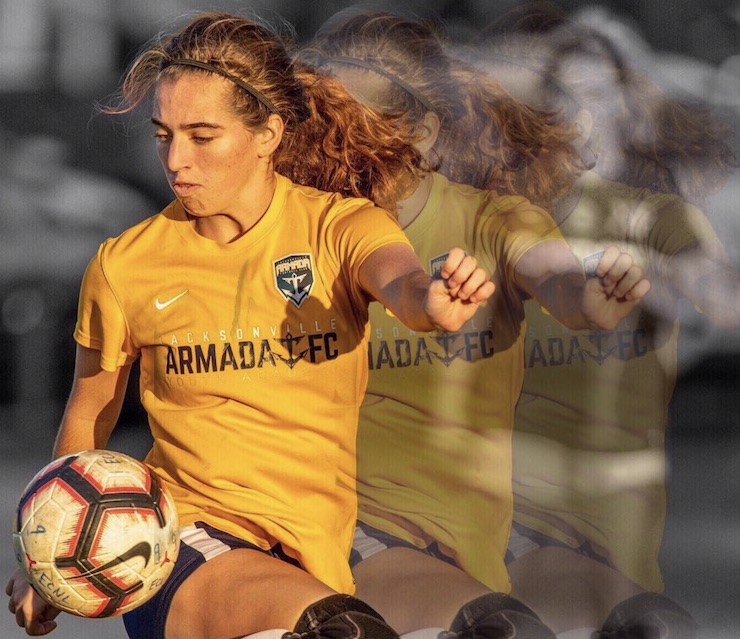Developing Players Who Can Think & Make Decisions – Are We Doing Enough To Develop Great Players?
The question is, are we doing enough to develop young players into confident players who can make great decisions while playing? While the practice of joy-stick coaching or yelling commands every second from the sidelines has become unpopular are today’s players really learning what to do on the field — or just remembering what they have been told?
Are We Doing Enough To Develop Players Who Can Win The Women’s World Cup Again?
As we all know, America loves to win. In women’s soccer, the USA has been the world’s success story winning three FIFA Women’s World Cups and four Olympic Gold medals but critics warn other countries are rapidly catching up. It is undeniable, competition is getting tougher.

So, looking ahead to the next generation of players for our US Women’s National Soccer Team (USWNT), will we have developed players who can win the FIFA Women’s World Cup again? Whether we want to develop future professionals or tomorrow’s collegiate players, what has to change?
Perhaps it is better to ask, what can we do better?
As the president of Elite Clubs National League, known in American youth soccer as ECNL, Christian Lavers has been at the forefront of developing girls soccer in America. As the leader of ECNL, with its 88 member youth soccer clubs, Lavers is in a pivotal role in developing the next generation of professional players — and a perfect person to ask … Are we doing enough?

With a ten year run of leadership unprecedented on the girls’ side of American youth soccer, ECNL’s president Christian Lavers has pioneered the development of elite girls soccer since 2009. Now, president of both Boys ECNL and Girls ECNL, Lavers continues to be a groundbreaker with finesse and an outspoken influencer of the modern game.
Read Articles on SoccerToday Written by Christian Lavers
A new series of interviews with Lavers starts with a look ahead: Are we doing enough to develop players? Lavers recently presented on this topic at the 2019 ECNL Coaching Symposium.
Here is a link to Part 2: ECNL’S CHRISTIAN LAVERS ON ONE PATHWAY TO DEVELOP PLAYERS IS NOT REALISTIC.
SoccerToday’s Interview With ECNL’s Christian Lavers – Part 1
Diane Scavuzzo: Do you believe ‘America’ is doing a good job of developing the next generation of players for the Women’s National team — so that we can keep winning the FIFA Women’s World Cup?
Christian Lavers: I think all of us have to do a better job of coaching. This is true on both sides of the game – men and women – and the ways to do so are the same regardless of gender.
And, I think that starts with understanding really how kids learn and the best way to get kids to learn.
Being a decision maker is very different from telling somebody how to make a decision.
When we’re teaching players to be successful in the long-term, we have to develop decision makers.

To accomplish this, we have to help players go through the decision making process themselves in the context of a game — so that they start learning how to think and decide between options and recognize pros and cons on their own.
That’s very different from giving them a short-term answer, saying ‘this’ is the right decision.
Coaching has to get better and as coaching gets better, players will get better.
There are really good coaches in this country, and there are not very good coaches – and winning games isn’t always correlated with that. I would hope every one of us, as coaches, wants to get better.
At the end of the day, we have to do a better job.
All of us, and I put myself and every coach in America in this group, have to be better at teaching players how to think, how to read the game and to be independent decision makers.

Diane Scavuzzo: What’s the best way to teach a player?
Christian Lavers: Well, ultimately you have to understand that the way players learn to make decisions is to actually make decisions and to make decisions over and over and over again.
Players need to be in a training environment where they go through the decision-making process themselves over and over, with effective guidance and intervention from the coach. Training activities need to be designed to provide the opportunity for players to make decisions in the same type of situation over and over, with a coach to point out things to think about, to point out the cues that lead to different solutions.
Players need the freedom to go through that process in training, and ultimately, the combination of freedom and repetition is what turns a conscious decision into a much faster and smoother unconscious decision
Diane Scavuzzo: Why is this so hard for coaches to do?
Christian Lavers: There’s a big difference in terms of efficiency.
Giving players answers is going to be very efficient in short-term improvement, but it’s not going to make a change in long-term player performance.
What makes the difference in long-term performance is players having the ability and freedom to go through the decision-making process themselves, so that they wrestle with the variables and the changing situation, they internalize the process in context, and then, ultimately enough information and experience has layered into their brain to allow them to make a really good, and a really fast decision, in a rapidly changing and dynamic environment.
When we give players answers all the time, even though we think it is helpful, it is just a shortcut in the short-term.

Diane Scavuzzo: At what age should we start teaching players to make decisions?
Christian Lavers: When they start to kick a ball.
Obviously, the type of decisions are going to be very different when the player is under eight or under 18-years-of-age, but we should not sell short the ability of an eight-year-old to think.
The second we say, “Eight-year-olds can’t possibly contemplate anything except just kicking this ball around a cone…” we are underestimating our players. And, this certainly flies in the face of what every parent in America knows about what their eight-year-old is capable of figuring out at home.
We must teach players to make decisions if we want them to be successful long term.
Read: Christian Lavers on IDENTIFYING & WATCHING A DEVELOPMENTAL SABOTEUR





